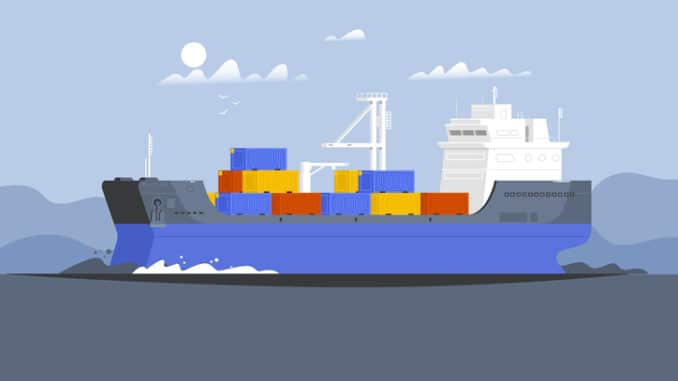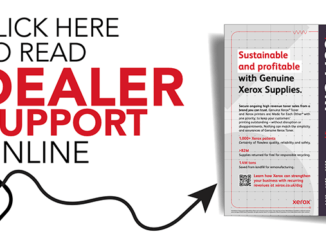
A year ago it would cost around $2000 to ship a 40-foot container between China and most European ports; today the cost is anywhere between $8000 and $10000. A perfect storm has resulted in sea freight prices rocketing, but how will this impact the office products industry?
Mark Galliano, MD, Teknik Office
2020 has been quite a year and has caused a huge number of challenges for many of us in the office furniture community – and things don’t look like they are going to get any easier in the first part of 2021.
At the start of the pandemic none of us knew what was about to unfold; I, for one, thought that sales would fall off a cliff and we would need to hunker down until the storm blew over. As it turned out, the exact opposite is true; sales rocketed, and demand for a broad range of products escalated. In normal conditions this would be a cause to celebrate, but the backdrop means that there is a hangover waiting in the wings.
International shipping lines have, over the last couple of years, been removing vessels from circulation to try and mitigate losses being caused by a reduction in demand, and continued to do so at the beginning of the pandemic as various parts the world progressively went into lockdowns. However, what was actually happening was a huge bottleneck growing in China, caused by the temporary closure of factories and the enormous pent-up demand for WFH and PPE products. We have all been playing catch-up with stock during the second half of 2020…which brings us to where we are now, and the latest challenge we face.
Each year, from July onwards, all importers work towards building their stock levels to cover increasing demands over Christmas and the subsequent production hiatus caused by Chinese New Year in February (annual factory closedown) so, on top of the pressure created by the lockdowns, Far Eastern production facilities have been swamped to a level never seen before. We have been battling with raw material shortages and production delays and now find ourselves jostling for space on vessels in the Far East.
This is where the problem is growing from.
As usual with the forces of supply and demand, where supply is limited, costs tend to increase – as a result, the shipping lines are definitely taking advantage of the opportunity to repair their balance sheets and this is being reflected in the costs of sea containers. Where they are normally around $2000, they have been moving upwards to $7000 – $8000 – with a possibility of exceeding $10,000 per container over the coming months in the lead-up to Chinese New Year and, if the pressure on the flow of goods doesn’t ease, this could continue into the second quarter/mid-year (gulp…or beyond). There are also other factors – like peak season surcharges and congestion costs – on top of the sea freight rates increases.
If you take a simple calculation of say, 350 items on a container (an executive mesh chair, for example) you can see the cost impact on the individual product escalates from $6 up to $23 with the possibility of it moving to $29, which is simply too much to absorb within normal costing models, so there will inevitably be increases that the supply chain (importer/wholesalers, dealers/retailers) will need to feed through to the consumer.
Another consideration in relation to furniture items is that the container loading efficiency isn’t always great. The 350 chairs in our example would be mid-range items with a mid-range price point, meaning that the increased shipping costs as a percentage of the trade price is very high; a container of very small, high value, items probably wouldn’t create such a big problem, so other importers may see the ‘problem’ differently. We can only speak from our perspective; our competitors will, no doubt, be grappling with the same challenges.
We expect costs to increase at this time of year, but they are normally within predictable levels and for a predictable period of time, so they can be anticipated and factored into our prices to give stability to our retailers – but these are not normal times and are certainly not normal increases. Hopefully, the backlogs will clear and the costs will soften soon.
We all hope they will, but I wouldn’t bet my house on it!
Peter Cowan, procurement director, Data Direct
Sea and air costs have been a huge factor throughout 2020, and will certainly continue for the next three-to-four months. Increases in airfreight costs are obvious – ‘belly’ space – the space in the ‘belly’ of passenger flights – is down by 80% as passenger numbers have plummeted. In terms of Seafreight, we have hit the absolute perfect storm – a combination of COVID-19, Brexit and the time of year.
Freight always sees a massive boom for the Christmas sales, but now there is also the additional stockpiling ahead of Brexit. These factors, combined with lower staff levels due to distancing and other safety measures, new/slower customs processes, a huge imbalance of imports v exports and the fact that any PPE shipments will always be prioritised, make for the perfect storm. With carriers being over-booked by around 50%, supply and demand does its work and prices increase exponentially.
Just to add to the carnage, Chinese New Year at the end of January will bring the next phase, and will keep prices high for somewhat longer. Further to this, the sheer congestion in the major UK ports means that they are physically unable to move empty containers back onto vessels to send to China.
Ships have been decommissioned as ocean carriers to cut capacity when demand is low, ensuring maximum yield from any floating stock which is still active; lack of crew has also had some influence. Even though clothing, etc., is down in sales, people are shopping like crazy for new gadgets, home offices and general home improvement – most of the stuff we import – so there is still a high demand.
We are already experiencing shortages of many products, but importers have now adapted their procurement cycles to allow for increased transit times, and we are no different. The shortages should soon start to ease as the transit machine starts to operate more efficiently, and new processes and systems are honed to perfection.
As a result of all these challenges, everybody has to be prepared for some disappointment. Whether it be the new PlayStation, or a fusing unit for a printer – plan purchases as far ahead as possible, and don’t over-promise until your supply chain has been confirmed. Having detailed discussions with your suppliers will help to alleviate the bumps in the road.
As always, plan for the worst and hope for the best!
Darryl Brunt, sales and marketing director, Fellowes Brands UK and Ireland
Very few of us were sorry to see the back of 2020 but, as we welcome in a new year, we still find ourselves navigating through rough seas as the fallout of COVID-19 continues to wreak havoc on people’s lives and the world’s economies. The passage is especially turbulent on the trade routes from China and the Far East, where sea freight rates are at an all-time high.
There’s no doubt that the catalyst of the problem has been COVID-19 but, as Darryl Brunt, sales and marketing director for Fellowes Brands UK and Ireland explains, the problem has been further compounded by several factors, ‘’Asia went into lockdown in February, resulting in blanket factory closures and a subsequent drop in demand for container freight across all markets as the pandemic spread globally.
‘’To manage the expected decline in business, freight carriers began to blank sailings, return leased containers and cancel orders for new ones. But as lockdowns were eased in Western markets, carriers were caught out by the rush in demand from importers looking to replenish exhausted stock, governments in desperate need of hygiene supplies, and the added pressures created by grounded air freight operators.’’
Darryl also believes that the situation has been made worse by the delays in the redeployment of vessels and the escalation of port congestion, where missed time slots and the slow turnaround of containers have meant an increase in redirections and failed dockings.
Like the pandemic, the sea freight crisis will, no doubt, be a concern for several months to come, but it is hoped that, as we return to normal, the problems will ease, and things will begin to level out in the spring.
Despite the current pressures, however, Darryl is confident that Fellowes have put plans in place to weather the storm and ensure stock levels are maintained to meet demand. ‘’Our supply chain is very well-connected – especially across Asia – which means, in these most challenging of times, we’ve mostly been able to meet increased demand for products such as shredders, laptop risers, air purifiers, cleaning products and other homeworking essentials. We’ve also been extremely disciplined when forecasting sales and identifying changing trends.
‘’Equally important for our customers in these tough times, we’ve continued to offer exceptional value for money. Wherever possible, we’ve resisted passing on increased costs that have been forced upon us and in some of our categories, such as autofeed shredding, we have lowered our prices.
“As always, our focus is to bring value and innovation to the consumer which we believe is the best way to navigate these challenging times.”


Be the first to comment